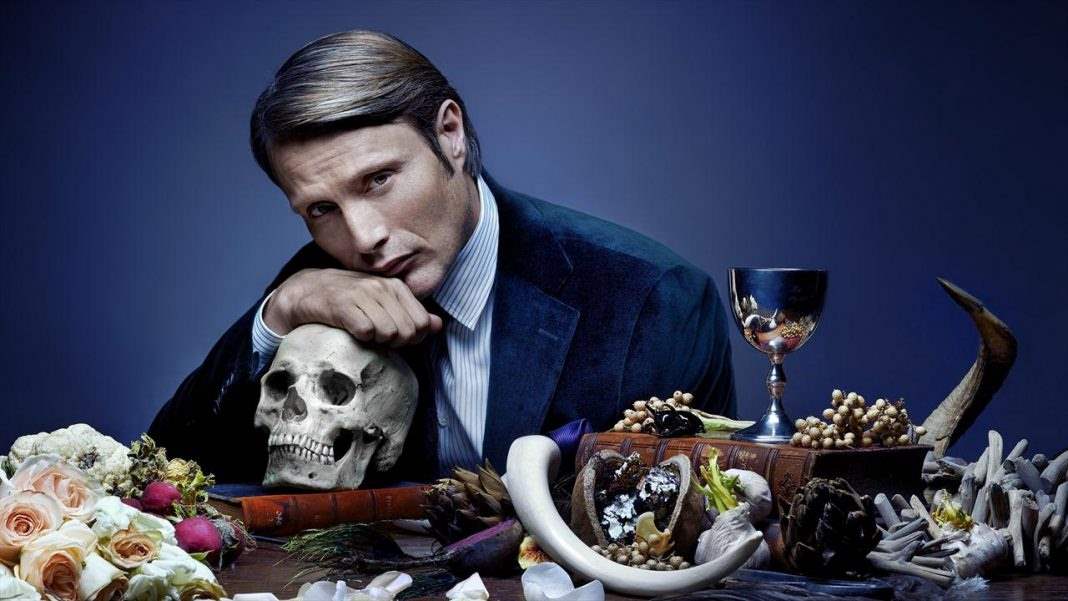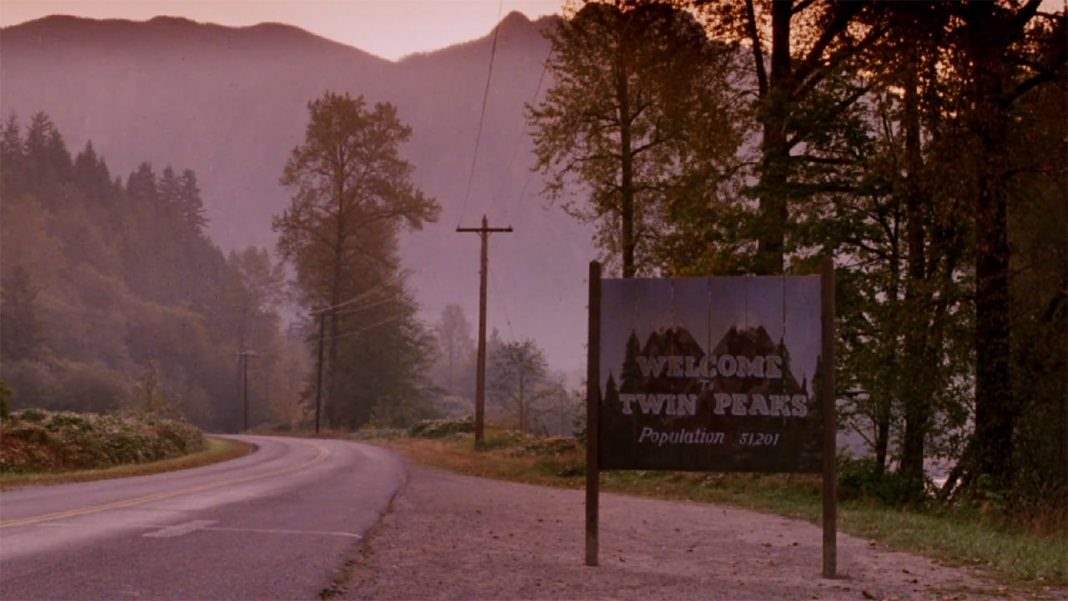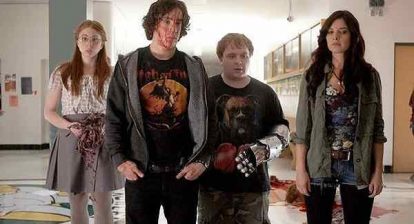This week’s episode of Hannibal was met with much anticipation, at least by this viewer. Not only is the show’s storyline moving into much more familiar territory with the introduction of the Red Dragon, as presented in Thomas Harris’s novel of the same name, but this particular episode was also directed by none other than Neil Marshall. Marshall is of course well known by horror fans for directing such films as Dog Soldiers and The Descent, and he has also directed episodes of Game of Thrones. With all this exciting new stuff going on, there was no way this episode could disappoint.
And indeed it doesn’t. The show has never been afraid to move the story in the direction they want by way of time jumps, and episode eight, “The Great Red Dragon,” is no exception – taking audiences three years into the future after the events of the previous episode “Digestivo” (note the change in the titling of the episodes). Hannibal turned himself in to Jack Crawford and the FBI and is now incarcerated in the Baltimore State Hospital for the Criminally Insane, under the care of Frederick Chilton and Alana Bloom, who apparently now works there. Will Graham has created a new life with a new family and distanced himself from the FBI after his experience with Hannibal, but is pulled back in after the emergence of a new serial killer.
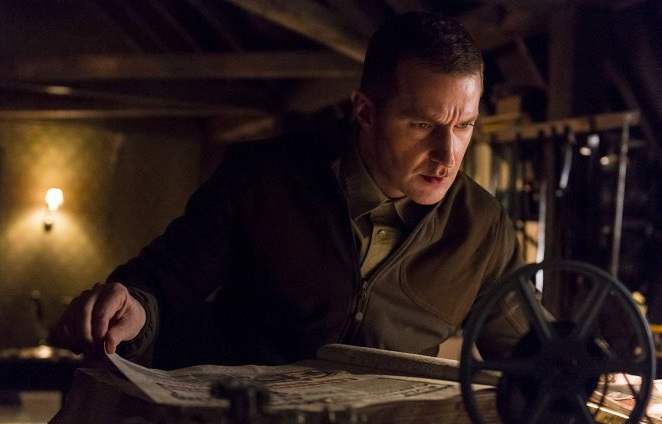 The episode opens with the introduction of this killer, visually trying to encapsulate the disturbing mind of Francis Dolarhyde, wonderfully played by Richard Armitage. In fact, as the character is a loner, all of his scenes are bereft of speech, so Armitage has to tell us all he can about the character using only his physicality. Though the show’s continually mind-blowing music helps throughout the episode and these particular scenes, Armitage shows great skill with is development of the character physically – from the opening sequence when he is doing these weird stretching moves on all fours, making his body movements look almost unnatural, to the creepy – and strangely still beautiful – shot of him standing in the snow naked, covered in blood after having murdered a family. Dolarhyde’s mindset comes from his obsession with the painting “The Great Red Dragon and the Woman Clothed in Sun” by William Blake, and Marshall and Armitage bring this to life with the great shot of him kneeling in front of the painting like it was an altar, with the tattoo covering his back.
The episode opens with the introduction of this killer, visually trying to encapsulate the disturbing mind of Francis Dolarhyde, wonderfully played by Richard Armitage. In fact, as the character is a loner, all of his scenes are bereft of speech, so Armitage has to tell us all he can about the character using only his physicality. Though the show’s continually mind-blowing music helps throughout the episode and these particular scenes, Armitage shows great skill with is development of the character physically – from the opening sequence when he is doing these weird stretching moves on all fours, making his body movements look almost unnatural, to the creepy – and strangely still beautiful – shot of him standing in the snow naked, covered in blood after having murdered a family. Dolarhyde’s mindset comes from his obsession with the painting “The Great Red Dragon and the Woman Clothed in Sun” by William Blake, and Marshall and Armitage bring this to life with the great shot of him kneeling in front of the painting like it was an altar, with the tattoo covering his back.
Will is a changed man, but not so much so that he has completely let go of his former duties as a profiler. He is living a new life that is seemingly perfect for him – still out in the country with his dogs, but also now with the support and love of his wife Molly and her son. This is perhaps why it is harder for him to resist, even though he tries, when Jack Crawford approaches him about helping with the case of the Tooth Fairy, who murders entire families. Will understandably does not want to return to that life. He wants to help but fears that his empathic abilities and how deeply he gets into the minds of killers will once again change him, perhaps turning him into the Will from the beginning of the show. His conscience and Molly’s encouragement ultimately make him take the job, despite a letter he receives from Hannibal telling him to do just the opposite.
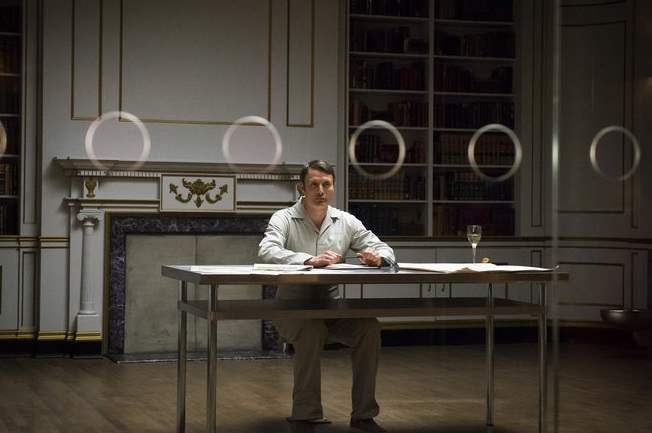 Marshall’s direction is able to match the already established look of the show, with some subtle differences. There were many iconic shots in this episode that needed to be done right and Marshall nailed each one – Mads Mikkelsen in Hannibal’s white hospital garb behind the wall of glass, and the shot of Dolarhyde from behind, silhouetted by the projector light, for instance. The shining moment of the episode, though, is when Will is profiling at the Leeds family home. The familiar pendulum swings in front of the shot, and we are brought back to how the whole show originally opened, with Will explaining the killer’s “design.” Also interesting to note were the scenes of Hannibal in his cell, and the way he pictured himself talking to his visitors as if he were back in his psychiatrist office again. It’s something small, but it helps retain Hannibal’s sense of elegance even if he is incarcerated.
Marshall’s direction is able to match the already established look of the show, with some subtle differences. There were many iconic shots in this episode that needed to be done right and Marshall nailed each one – Mads Mikkelsen in Hannibal’s white hospital garb behind the wall of glass, and the shot of Dolarhyde from behind, silhouetted by the projector light, for instance. The shining moment of the episode, though, is when Will is profiling at the Leeds family home. The familiar pendulum swings in front of the shot, and we are brought back to how the whole show originally opened, with Will explaining the killer’s “design.” Also interesting to note were the scenes of Hannibal in his cell, and the way he pictured himself talking to his visitors as if he were back in his psychiatrist office again. It’s something small, but it helps retain Hannibal’s sense of elegance even if he is incarcerated.
Audiences were also treated to the return of some beloved characters in this episode, including Dr. Frederick Chilton. If he hasn’t gotten enough credit already, Raul Esparza is so delightful at playing the guy you love to hate, and I hope that he gets many more scenes in future episodes. Two surprises came in the forms of Jimmy Price and Brian Zeller, the Rosencrantz and Guildenstern of crime scene analysis. They are brought in to examine the bodies of the dead families, and once again bring a wonderful and welcome comedic relief to the show despite the macabre nature of their jobs. Actors Scott Thompson and Aaron Abrams slip easily back into these roles, and again, I hope to see more of these two as the season continues.
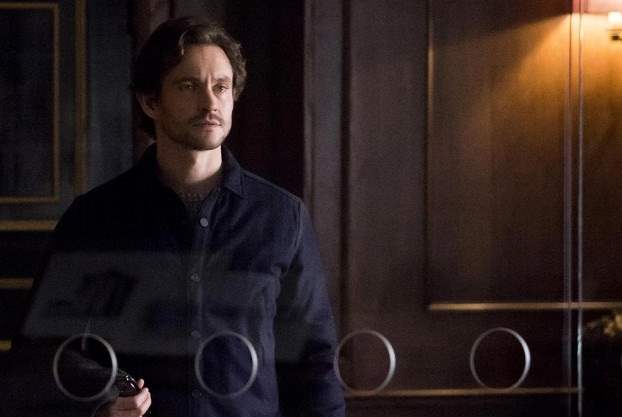 And just like we had to wait for much of the beginning of this season to see Will and Hannibal reunited again, “The Great Red Dragon” ends with that same anticipation. Will realizes that he needs to consult with Hannibal about the Tooth Fairy – and that he also just needs to see him again – and the closing shot is Will approaching the glass and the two of them exchanging hellos. Though much of what we have seen in this episode and will see in subsequent episodes has already been seen before in film, it is still interesting and exciting to watch how the show handles it. The style and the music bring a greater sense of dread to what is going on with the plot, and the lead actors continue to be fascinating and engaging in their portrayals of the characters. Armitage in particular was very impressive, and will no doubt continue to impress during his journey to becoming the Red Dragon.
And just like we had to wait for much of the beginning of this season to see Will and Hannibal reunited again, “The Great Red Dragon” ends with that same anticipation. Will realizes that he needs to consult with Hannibal about the Tooth Fairy – and that he also just needs to see him again – and the closing shot is Will approaching the glass and the two of them exchanging hellos. Though much of what we have seen in this episode and will see in subsequent episodes has already been seen before in film, it is still interesting and exciting to watch how the show handles it. The style and the music bring a greater sense of dread to what is going on with the plot, and the lead actors continue to be fascinating and engaging in their portrayals of the characters. Armitage in particular was very impressive, and will no doubt continue to impress during his journey to becoming the Red Dragon.
